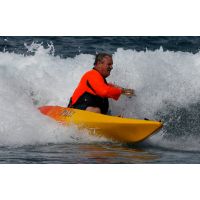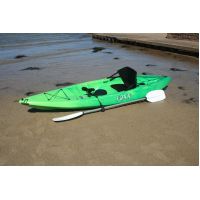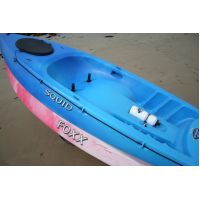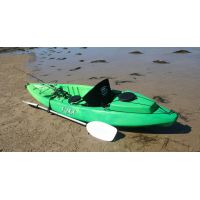Cart is empty
Buying a Canoe
Here is some background knowledge so you know what to look for and can ask relevant questions and so be able to make an informed decision when purchasing a canoe. If you require further information, please contact Australis on 02 4285 2000.
There is a separate page for:
What to look for in a CANOE
This section outlines the features to look for when looking at a canoe.
If you require further information, please contact Australis on 02 4285 2000.
Design
- Length
- Width
Construction
- Material
- Repair
- Replacement Parts
DESIGN
Length
Whilst as a rule, canoes are not built to travel very fast, the length of the canoe will affect its speed.
A longer canoe will generally give a faster (and smoother) ride, whilst a shorter canoe will not be as fast as it has a shorter waterline.
Apart from being faster, a longer canoe will also have better "straight-line" tracking, whilst a shorter canoe will turn easier than, as you don't have as much length to move across the water.
The bottom line is...
You will need to consider your requirements with regards to speed and turning ability and look for a canoe that will fit your requirements.
Width
The width of the canoe affects speed and stability.
Canoes generally offer great stability because they are so wide, however the other side of this equation is that it makes the canoe slower.
The bottom line is...
Look for a canoe with a width that gives you both the speed and stability you require.
CONSTRUCTION
Material
There are a number of materials that canoes are available in, and each offers different benefits and drawbacks.
Differences in materials include:
- Some have more impact resistance than others and can take handle rougher treatment
- Some materials are repairable whilst others are not
- Some materials are more rigid than others.
- Some materials have higher UV resistance than others.
The bottom line is...
Consider the positive and negative points of the material, and make an informed decision.
Repair
Whether a canoe is repairable or not is dependant on the material that it is made from.
Differences in materials include:
- Polyethylene (single layer) can be easily repaired by an experienced welder as the material itself is repairable and the layer is actually thick enough to take a weld.
- Polyethylene (triple layer) is difficult to repair because even though in theory the material is repairable and whilst the overall wall thickness may be equivalent to that of a single layer Polyethlyene canoe, the plastic around the air bubbles in the middle layer is not thick enough to withstand the heat of the welder and disintegrates.
The bottom line is...
A single layer polyethlene canoe is easier to repair than a triple layer canoe.
Replacement Parts
Although there is not much to go wrong with a canoe, an important consideration is whether spare parts are readily available if they are broken in an accident or simply need replacing because of general wear-and-tear.
Through the years we have found many people ring to ask if our keels or seats will fit other brands of canoes because they are unable to buy a replacement for one that has broken.
The bottom line is...
Ask whether factory back-up is available, even though you hope you never need it.
© 2013-2024 Australis Canoes. Powered by AVS Online Store




